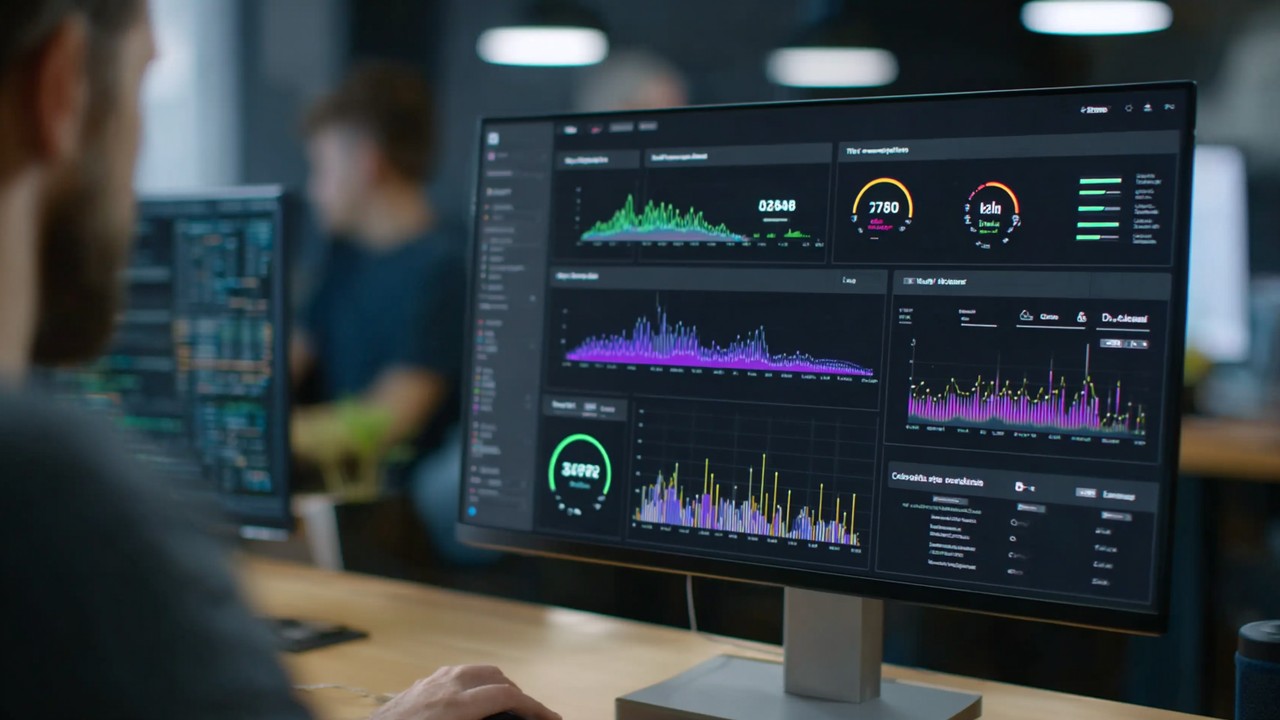Nginx FastCGI Cache: PHP Application TTFB Optimization
Nginx FastCGI Cache is a powerful feature designed to significantly improve the performance of PHP applications by reducing server response times. In modern web architectures, where user experience and speed are paramount, optimizing backend processing is crucial. Leveraging FastCGI Cache can transform how PHP applications handle requests, leading to faster content delivery and lower server loads.

Understanding Nginx FastCGI Cache and Its Role in PHP Application Performance
Nginx FastCGI Cache is a mechanism that stores the output of PHP scripts generated via FastCGI, allowing subsequent requests to be served directly from the cache instead of invoking PHP processing repeatedly. This caching layer acts as an intermediary between the web server and the PHP application backend, capturing rendered pages or API responses and delivering them swiftly to users.
The relationship between FastCGI Cache and PHP applications is rooted in the common performance bottleneck associated with PHP’s dynamic content generation. Each PHP request typically triggers the execution of scripts, database queries, and other backend operations. By caching the final output, FastCGI Cache circumvents redundant processing, thus reducing the load on PHP-FPM (FastCGI Process Manager) pools and database servers.
One of the most crucial metrics to assess PHP application responsiveness is Time to First Byte (TTFB), which measures the delay between a client’s request and the arrival of the first byte of the server’s response. Without caching, TTFB can be adversely affected by factors such as slow script execution, database latency, or heavy server load. Implementing FastCGI Cache directly addresses these issues by serving cached content almost instantaneously.
High TTFB in PHP applications often arises from:
- Repeated PHP script execution on every request, even when the output does not change frequently.
- Extensive database queries that increase backend processing time.
- Insufficient server resources leading to queueing and delayed responses.
- Lack of effective caching mechanisms in the web server layer.
By integrating Nginx FastCGI Cache, web server caching becomes a robust solution to these problems. It reduces backend processing demands, leading to improved TTFB and a smoother user experience. This approach not only accelerates page delivery but also scales well under heavy traffic, making it an indispensable technique for PHP application caching.

In summary, understanding the core functionality of Nginx FastCGI Cache and its direct impact on PHP application performance reveals why it is a preferred method for TTFB optimization. Efficient caching at the web server level minimizes redundant PHP processing and dramatically enhances the speed at which users receive content.
Configuring Nginx FastCGI Cache for Optimal PHP Application TTFB Reduction
Setting up Nginx FastCGI Cache correctly is essential to unlock its full potential in PHP application caching and achieve significant TTFB optimization. The configuration involves several key directives and best practices that govern how cached data is stored, identified, and served.
Step-by-Step Guide to Enabling FastCGI Cache in Nginx for PHP
Define the Cache Path:
Use thefastcgi_cache_pathdirective to specify the cache storage location, size, and levels. For example:fastcgi_cache_path /var/cache/nginx/fastcgi_cache levels=1:2 keys_zone=PHPCACHE:100m inactive=60m;This sets the cache directory at
/var/cache/nginx/fastcgi_cache, creates a cache zone namedPHPCACHEwith 100MB of shared memory for keys, and automatically purges entries inactive for 60 minutes.Enable Cache in Server Block:
Inside the server or location block handling PHP requests, activate caching:fastcgi_cache PHPCACHE; fastcgi_cache_key "$scheme$request_method$host$request_uri"; fastcgi_cache_valid 200 302 10m; fastcgi_cache_valid 404 1m; fastcgi_cache_use_stale error timeout invalid_header updating;These directives configure the cache zone, define a unique cache key for each request, specify expiration times for different response codes, and enable serving stale content in case of backend issues.
Pass FastCGI Parameters:
Ensure all necessary FastCGI parameters are passed to PHP-FPM:include fastcgi_params; fastcgi_pass unix:/run/php/php7.4-fpm.sock;Adjust the socket or TCP address according to your PHP-FPM setup.
Best Practices for Cache Zone Sizing, Cache Key Design, and Expiration
Cache Zone Sizing:
Thekeys_zonesize should reflect the expected number of cached entries and traffic volume. Insufficient sizing leads to frequent cache evictions, reducing cache hit ratios and negatively impacting TTFB.Cache Key Design:
A well-craftedfastcgi_cache_keyensures distinct cache entries for different requests. Including elements like the request method, host, URI, and query strings is crucial to avoid cache pollution.Cache Expiration Policies:
Setting appropriate validity times withfastcgi_cache_validbalances cache freshness and performance. Short-lived dynamic content might require shorter TTLs, while static or rarely changing pages can benefit from longer cache durations.
Integrating FastCGI Cache with PHP-FPM Pools
Optimizing cache effectiveness requires tight integration with PHP-FPM pools. Since FastCGI Cache serves content before PHP-FPM is invoked, proper configuration of PHP-FPM process management can reduce backend load:
- Configure PHP-FPM pools for efficient request handling with adequate worker processes to prevent bottlenecks.
- Use separate pools for different application components if needed, enabling granular cache control.
- Monitor PHP-FPM status to correlate backend processing with cache performance.
Troubleshooting Common Configuration Pitfalls Impacting Cache and TTFB
Incorrect Cache Key:
Omitting essential request components in the cache key may cause cache collisions or serve wrong content, leading to inconsistent user experiences.Cache Not Being Used:
Misconfiguredfastcgi_cachedirectives or conflicts with other Nginx modules can prevent cache hits, causing PHP to process every request and increasing TTFB.Stale Content Handling:
Failing to enablefastcgi_cache_use_stalecan result in poor availability during backend failures or slowdowns.Permissions Issues:
Nginx must have proper read/write access to the cache directory; otherwise, caching will fail silently.
By carefully following these setup steps and best practices, administrators can harness the full power of Nginx FastCGI Cache. This leads to a noticeable reduction in PHP application TTFB and a more scalable, responsive web server environment. Proper cache configuration is the foundation upon which further performance gains can be built.

Measuring and Analyzing TTFB Improvements with Nginx FastCGI Cache in PHP Environments
Accurately measuring the impact of Nginx FastCGI Cache on PHP application performance is crucial for validating optimizations and guiding further tuning efforts. Time to First Byte (TTFB) serves as the primary metric to assess how effectively the cache reduces latency.
Tools and Methods to Measure TTFB Before and After Enabling FastCGI Cache
Several tools and approaches enable developers and system administrators to quantify TTFB:
curl Command-Line Utility:
Use the verbose mode to capture the timing of each phase in the HTTP request lifecycle. For example:curl -o /dev/null -s -w "TTFB: %{time_starttransfer}s\n" https://example.com/page.phpThis command outputs the TTFB value directly, allowing easy comparison before and after cache activation.
WebPageTest:
This web-based performance testing tool provides detailed waterfall charts showing TTFB alongside other metrics. It helps visualize improvements in real user conditions.Browser Developer Tools:
Modern browsers’ Network panels display TTFB under the “Waiting” or “Time to First Byte” label. Repeated tests in incognito mode can reduce interference from client-side caching.
Interpreting TTFB Metrics in PHP Application Performance Context
A lowered TTFB after enabling FastCGI Cache indicates that Nginx serves content from the cache rather than invoking PHP. Typically, uncached PHP requests exhibit TTFB values ranging from hundreds of milliseconds to several seconds depending on backend complexity. With caching, TTFB can drop dramatically to just a few milliseconds.
It is important to consider that TTFB improvements translate directly into better user experience, as faster server response reduces perceived latency and accelerates page rendering. Moreover, a consistent reduction in TTFB under varied load conditions reflects improved server scalability.

Case Studies and Benchmarks Demonstrating TTFB Reduction
In real-world scenarios, PHP applications leveraging FastCGI Cache often achieve:
- 50% to 90% reduction in TTFB, especially for pages with dynamic content that is cacheable.
- Reduced CPU and memory utilization on PHP-FPM pools, leading to more requests handled per second.
- Noticeably faster response times during traffic spikes, preventing server overload.
For example, an e-commerce site observed TTFB drop from approximately 800ms to less than 100ms on product pages after implementing FastCGI Cache, significantly enhancing user engagement and conversion rates.

Using Nginx Logs and Cache Status Headers to Verify Cache Effectiveness
Nginx provides mechanisms to monitor cache performance and verify hits versus misses:
X-Cache-Status Header:
By adding this header to responses, administrators can see whether a request was served from cache (HIT), fetched anew (MISS), or served stale content (STALE).Access Logs:
Customizing Nginx log formats to include cache status helps analyze traffic patterns and cache efficiency.
For example, adding this to the Nginx configuration:
log_format cache '$remote_addr - $remote_user [$time_local] '
'"$request" $status $body_bytes_sent '
'"$http_referer" "$http_user_agent" '
'Cache-Status:$upstream_cache_status';
access_log /var/log/nginx/access.log cache;
This allows quick identification of caching behavior and aids troubleshooting.
Impact on Server Resource Utilization and User Experience
By serving cached responses, Nginx FastCGI Cache drastically reduces the number of PHP-FPM invocations, cutting CPU and memory usage. This optimization not only lowers server costs but also improves application availability and reliability.

End users benefit from faster page loads and smoother interactions, which are critical factors in reducing bounce rates and enhancing overall satisfaction. In sum, measuring and analyzing TTFB improvements provides tangible proof of FastCGI Cache’s role in PHP performance benchmarking and latency reduction.
Advanced Techniques to Enhance Nginx FastCGI Cache Efficiency for Dynamic PHP Applications
Caching dynamic PHP content presents challenges, but advanced strategies enable effective FastCGI Cache use even in complex scenarios where content changes frequently or partially.
Strategies for Caching Dynamic or Partially Cacheable PHP Content
Cache Bypass:
Using Nginx conditions to skip caching for certain requests, such as those with specific cookies (e.g., logged-in users) or query parameters, ensures private or user-specific content is never cached.Serving Stale Content:
Thefastcgi_cache_use_staledirective allows serving expired cache entries during backend errors or slowdowns, maintaining responsiveness.Cache Purging:
Implement mechanisms to invalidate or purge cached content immediately after updates, ensuring users receive fresh data.
Using Cache Purging and Invalidation Tools
Nginx does not provide built-in cache purging, but modules like ngx_cache_purge enable selective cache invalidation through HTTP requests or APIs. This is essential for dynamic sites where content changes frequently.
Example usage:
curl -X PURGE https://example.com/page-to-purge.php
Automating purges after content updates via CMS hooks or deployment scripts maintains cache accuracy without manual intervention.
Combining FastCGI Cache with Other Performance Optimizations
To maximize PHP application performance, FastCGI Cache should be complemented with:
Opcode Caching (OPcache):
Caches compiled PHP bytecode, reducing script compilation overhead.PHP-FPM Tuning:
Adjust worker counts, process management, and timeouts for optimal PHP backend responsiveness.CDN Integration:
Offloads static assets and cached pages closer to end users, further reducing latency.
These combined layers create a comprehensive performance stack.
Security Considerations When Caching PHP Responses
Caching introduces potential risks if sensitive data is inadvertently stored or served:
- Avoid caching responses that include user sessions, authentication tokens, or personalized information.
- Use cache bypass rules for requests with cookies indicating logged-in status.
- Sanitize cache keys to prevent cross-user data leakage.
- Review HTTP headers like
Cache-ControlandSet-Cookieto control cache behavior.
Implementing these precautions ensures secure caching without compromising user privacy.
Employing these advanced techniques results in a more flexible and efficient Nginx FastCGI Cache setup, capable of handling dynamic PHP applications while maintaining low TTFB and high reliability.

Maximizing PHP Application TTFB Optimization with Nginx FastCGI Cache: Best Practices and Real-World Recommendations
Achieving optimal TTFB reduction in PHP applications through Nginx FastCGI Cache requires a disciplined approach to implementation and ongoing maintenance. Adhering to best practices not only enhances performance but also ensures cache reliability and security over time.

Key Takeaways for Implementing and Maintaining FastCGI Cache
Consistent Cache Key Strategy:
Design cache keys that uniquely identify cacheable content while excluding variables that produce unnecessary cache fragmentation. Including host, request method, URI, and relevant query parameters guarantees high cache hit ratios and accurate content delivery.Appropriate Cache Expiration:
Balance cache freshness with performance by setting sensible TTLs. Stale content can be served temporarily during backend issues usingfastcgi_cache_use_stale, but frequent cache purges or short TTLs may be needed for highly dynamic sites.Robust Cache Monitoring:
Regularly analyze Nginx logs with cache status indicators to monitor hit ratios, misses, and stale content usage. Monitoring tools and alerting ensure cache health is maintained and configuration adjustments are made proactively.Integration with PHP-FPM and Backend Systems:
Coordinate FastCGI Cache with PHP-FPM tuning and backend optimizations to create a harmonious performance environment. Cache efficiency is maximized when backend processing is streamlined and resource usage is optimized.
Trade-offs Between Cache Freshness and Performance Gains
While caching dramatically improves TTFB and reduces server load, it inherently introduces a trade-off between content freshness and speed. Aggressive caching strategies may serve outdated pages if cache invalidation mechanisms are not in place. Conversely, overly conservative caching can reduce performance benefits.
To navigate this balance:
- Use cache purging to update content immediately after changes.
- Employ short expiration times for frequently updated resources.
- Serve stale content during backend slowdowns to maintain availability.
- Selectively bypass caching for user-specific or sensitive responses.
Understanding these trade-offs allows teams to tailor caching policies based on application needs and user expectations.
Recommendations for Monitoring Cache Health and Adapting Cache Policies
Effective cache maintenance hinges on continuous observation and adjustment:
Utilize Cache Status Headers:
Implement headers likeX-Cache-Statusto identify cache hits and misses in real time.Analyze Access Logs:
Customize log formats to include cache data, enabling detailed traffic and cache behavior analysis.Automate Alerts:
Set thresholds for cache hit ratios or error rates that trigger notifications, prompting investigation.Review Cache Sizes and Expiry Intervals:
Adjust cache zones and TTLs based on traffic patterns and content update frequency to optimize storage and performance.Test Cache Purge Procedures:
Regularly verify that purging mechanisms work correctly to prevent stale content delivery.
Adapting cache policies in response to monitoring insights ensures sustained TTFB optimization and smooth user experiences.
Scenarios Where FastCGI Cache May Not Be Ideal and Alternative Solutions
Despite its advantages, Nginx FastCGI Cache is not always the best fit:
Highly Personalized or Real-Time Content:
Applications delivering individualized data (e.g., dashboards, user profiles) often cannot leverage shared caching without complex bypass logic.Applications with Frequent Content Changes:
Sites with rapid content updates may suffer from stale cache issues unless purging is tightly integrated, which can add operational complexity.Encrypted or Sensitive Data:
Caching responses containing private information must be handled with extreme caution or avoided to maintain security compliance.
In such cases, alternatives like application-level caching (Redis, Memcached), opcode caching, or CDN edge caching may complement or replace FastCGI Cache.

Encouraging Continuous Performance Tuning Combining Caching with PHP and Server-Level Optimizations
Maximizing PHP application TTFB optimization is an ongoing journey. FastCGI Cache is a cornerstone, but combining it with other techniques leads to the best results:
OPcache:
Reduces PHP script compilation overhead.PHP-FPM Configuration:
Optimizes process management for concurrency and stability.Database Query Optimization:
Minimizes backend latency impacting TTFB.Content Delivery Networks (CDNs):
Offload static and cacheable assets closer to users.HTTP/2 and TLS Tuning:
Enhance protocol efficiency and security.
By continuously profiling performance, adjusting configurations, and embracing a holistic optimization mindset, teams can sustain low TTFB and deliver fast, reliable PHP applications at scale.

Implementing and maintaining Nginx FastCGI Cache with attention to these best practices ensures not only significant PHP TTFB optimization but also a stable, scalable environment. Balancing cache freshness, monitoring health, understanding limitations, and integrating complementary optimizations collectively create a resilient and high-performing PHP application stack.
